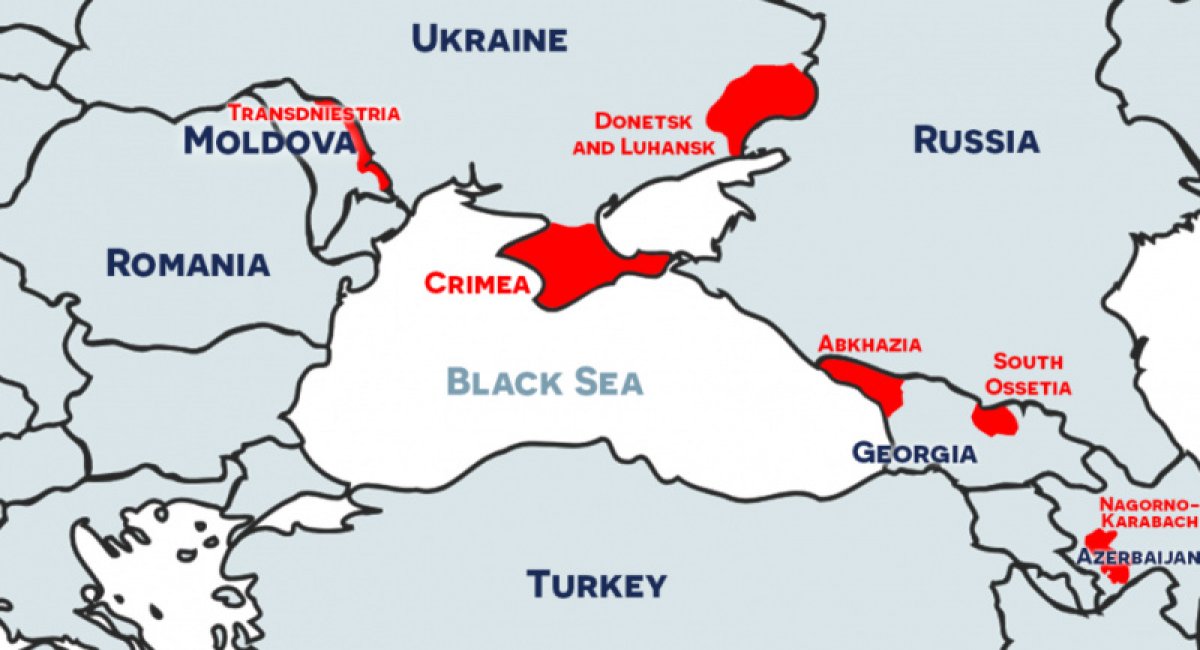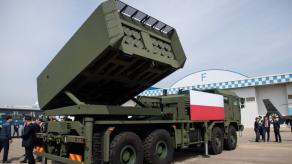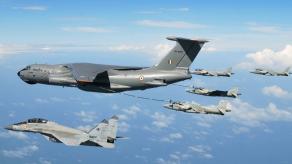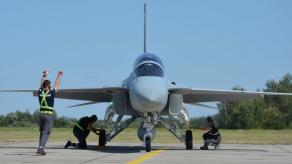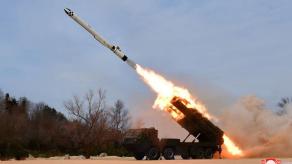The conflicts in these territories have remained frozen for multiple years and show no signs indicating they are going to be resolved any time soon.
Historical context
The disintegration of the Soviet Union, despite being relatively peaceful, left behind territorial disputes between some of the newly independent states, inter-ethnic conflicts and other controversial issues.
Read more: 1,100 Russian tanks, 330 warplanes along border with Ukraine
In the case of the Moldova-Transnistria conflict, for instance, the opposition of the people in Transnistria to the domination of Chisinau was caused by concern over the status of the ethnic Russian and Russian-speaking population in Moldova. In a parliamentary vote held in 1989, the Popular Front of Moldova political movement in the Moldavian Soviet Socialist Republic won a landslide victory, which caused the conflict to escalate further. The Popular Front advocated for the Romanian as the official state language while its ultimate goal was to unify Moldova and Romania. In the end, Moldova had found itself destabilized, due in no small part to Russian involvement. Russia, under the pretext of protecting the Russian-speaking population, intervened in the armed conflict between Transnistria and Moldova, just to eventually cement its military presence in the region.
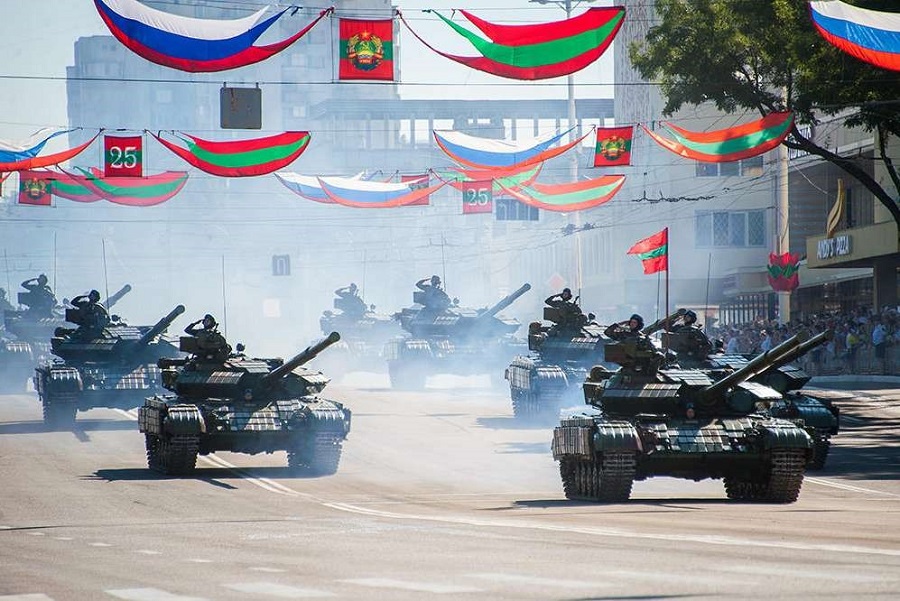
Factors similar to those observed in the Moldova-Transnistria conflict later manifested themselves in the conflict between Georgia and its breakaway regions of South Ossetia and Abkhazia. In the aftermath of the Soviet demise, both republics faced a dilemma of whether to join the newly created Georgian state or to fight for independence. South Ossetia, Abkhazia and Transnistria declared their willingness to remain part of the Soviet Union, attempting to retain considerable autonomy they enjoyed as former Soviet republics. As a result, this led to the emergence of pseudo-independent territories that relied for survival on the Kremlin’s aid.
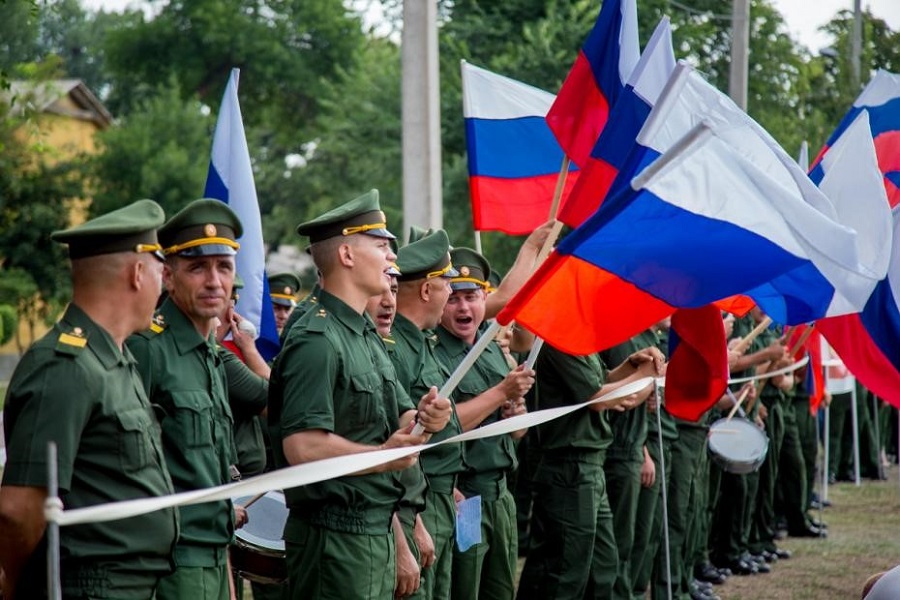
The Nagorno-Karabakh conflict, if compared to other post-Soviet conflicts, differs in that it is waged between two neighboring countries. Ethnically, Nagorno-Karabakh is a territorial enclave in Azerbaijan inhabited mostly by the Armenian population. This conflict involves Azerbaijan as seeking to recover full control over its territory and Armenia as standing behind the separatist “quasi-state”, also known as the Nagorno-Karabakh Republic. Here, Moscow is involved rather indirectly, since it supports Armenia militarily, although not without a selfish motive, aimed at building up its leverage with the authorities in Erevan.
The war in eastern Ukraine has not yet evolved into a frozen conflict, but it may well develop into what is now taking place in Transnistria, given a scarce reaction from European public opinion and the efforts being made by the Kremlin to legitimize the separatist authorities sitting in Luhansk and Donetsk.
Geopolitical interest
It is blindingly obvious that these conflicts all have arisen from common roots. It is open secret that Moscow has persistently intervened, directly or indirectly, into the internal affairs of its neighbors, using multiple different techniques making such intervention unnoticed by ordinary, uninformed people. In so doing the Kremlin pretends to be uninterested in any of the armed conflicts near the Russian borders - neither in the Republic of Moldova, nor in Georgia, nor in Ukraine, nor especially in Azerbaijan nor Armenia. The Kremlin is seeking to become a sovereign over the post-Soviet territories which it regards as belonging to its geopolitical sphere of influence, in fact seeking to materialize its ill-concealed neo-imperial ambitions.
With this robust instability belt surrounding it Russia has a strategic leverage over its former dominions, to firmly secure them within its sphere of influence on the one hand and to prevent NATO and the European Union from expanding farther eastward into the former Soviet land on the other.
Frozen post-Soviet conflicts also pose a major challenge in terms of international relations development. Neither Georgia, nor Moldova, nor Ukraine can be fully independent in pursuing their respective international policies due to lacking in full control over parts of their sovereign territory. The authorities of the quasi-states that emerged within those countries have pursued policies imposed on them by Russia, who, for its part, helps them provide their security and economic needs. In these quasi-states, any important policy decision cannot be made unless endorsed by the Kremlin. This means that settlement plans for these conflicts should be negotiated directly with Moscow, or otherwise they would face the risk of fail, as was the case on numerous occasions before.
When exploring the motives behind Russia’s policies vis-à-vis these frozen conflicts, one should be mindful that Russia, in pursuing its foreign policy agenda, not only seeks to stick to its status as a “grand power”, but is also increasingly striving to remain a powerful actor in the transformation of the geopolitical landscape in Europe, especially in Eastern Europe and the Black Sea region. Russia regards Transnistria and the South Caucasus region to be important strategic military strongholds; Russia’s presence in Transnistria enables it to exert influence over Southeastern Europe and the Balkans, while control over the Caucasus located at the intersection of Europe and Asia would allow for it to advance its interests deeper into the Near and Middle East, and into the Caspian Sea, Black Sea, and Mediterranean Sea regions.
Key tools and methods
Since Vladimir Putin’s coming to Presidency in 2000, Russian international policy has been obsessed with keeping former Soviet-bloc states firmly secured in the Kremlin’s orbit. All Russian pursuits towards former Soviet republics in Eastern Europe and the Caucasus were to prevent these states from integrating closer with Western political and military institutions. Proceeding on this track, Moscow employs a diversified range of mechanisms, one of most effective being the instigation of conflicts in those regions and keeping them frozen for as long as possible with aid of time proven leverages.
Russian military presence in conflict-torn regions is an important factor in keeping the conflicts frozen. As regards Moldova-Transnistria conflict, for example, the Istanbul 1999 OSCE Summit made Russia obliged to fully withdraw its forces, equipment and ammunition from Moldova till 2002. Moscow did so in part only, the result being that a major portion of Russian military arsenals and personnel has remained deployed in Eastern Moldova. Apart from the apparent unwillingness of the Transnistrian authorities to be left without the military resources they need to feel secure against potential military pressure from Chisinau, another reason why this conflict remains in limbo is Russia’s reluctance to withdraw from its last military outpost in the region, thus be short an effective tool to exert geopolitical influence, all the more so as Transnistria provides Russia with a leverage for influencing policies within Ukraine too.
Russia's military presence is also a factor standing in the way of even a hypothetical possibility of Tbilisi resuming reintegration talks with the governments of Abkhazia and South Ossetia. The conflict in Abkhazia -- which, like other ethnic and political conflicts in former Soviet republics, has lasted from the time when the Bolshevik-led Soviet government, in conducting arbitrary national-territorial delimitation, was guided not by historical reasoning, but, rather, by the striving to set neighboring ethnicities at odds with one another – concerns the interests of multiple ethnic and political factions. A permanent contingent of Russian forces has been deployed in the region since the developments of 1992-1994, and especially of 2008 when Russia decided to prove to the world it continues to be a geopolitical actor on the post-Soviet expanse, in particular in the Caucasus, by conducting what is refers to as “peace compelling” operation and stationing additional forces in the region. In Abkhazia, since 2009, Russia has had its 7th Military Base hosting around 4,000 personnel deployed at Bambour military airfield outside Gudauta, and has rented a military range along with a part of port and harbor facilities at Ochamchira and Kodori Gorge. In South Ossetia, the Russian 4th Military Base hosting, again, up to 4,000 personnel, is stationed at facilities based at Tskhinval, Dzartsemi Range, and a garrison and an airfield at Javi.
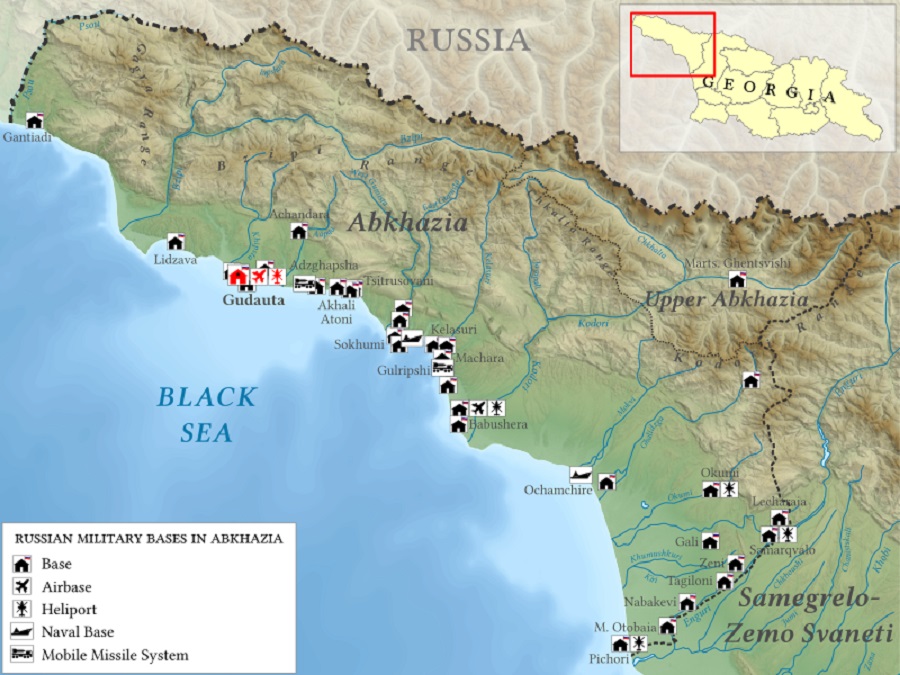
The military factor can also be observed in the Nagorno-Karabakh conflict. The conflict still remains unsettled, despite the efforts that have been made since 1994, including a protocol agreement signed in Moscow through the mediation of the then Russian Defense Minister, which obliged the conflicting parties to cease fire and halt violence; the signing of a force separation agreement; and the establishment of UN and OSCE missions to observe the cease-fire agreement. Moscow, while not being directly engaged in the dispute over Nagorno-Karabakh, provides military support to Armenia, its traditional regional partner who has its own vision as to the enclave’s future and hosts on its land a permanent contingent of Russian forces, numbering at least 20,000 troops.
Another leverage the Kremlin has over those states is the issuance of Russian passports to people residing in Transdnistria, Abkhazia, South Ossetia, and now the separatist-controlled areas of Donbas, thus obtaining a formal pretext to intervene militarily in order to “protect the rights of compatriots”.
For maintaining its geopolitical clout Russia also supports its sponsored separatist regimes with a tool such as referendum vote that serves to add legitimacy to policies pursued by its sponsored puppet governments. A number of fake referendums, held under a heavy Russian propaganda offence and a substantial pressure on voter opinions, have taken place in Transdnistria, Abkhazia, South Ossetia, as well as Russia-occupied areas in Donbas. It goes without saying that the votes all had predictable results that didn’t entirely reflect actual voter preferences. The Kremlin dismisses the allegations, saying these referendums are manifesting the “democratic” nature of the policies being pursued by the authorities in the break-away entities.
The collection of the tools Moscow has exploited in pursuit of its political agenda also includes posing itself as being genuinely interested in having the frozen conflicts resolved. In so doing Moscow seeks to impose settlement plans that serve the interest of nobody but Russia and have no chances of being accepted by relevant host-country governments, while fully disregarding the wishes and opinions of the separatist authorities concerned.
Thus, for settlement of the Transnistrian conflict Moscow is pacing preference on the so-called Kozak Memorandum. Under the plan, Moldova would become a federal state, along with Transnistria and Gagauzia (the latter of which is an autonomous territory recognizing Chişinau’s domination) as two self-governing administrative entities enjoing a veto over federal legislation. Moreover, Chişinau would not be entitled to interfere in local legislation in these entities.
The recommendations listed out in the Kozak Memorandum proved unfavorable for Moldova’s central authorities, meaning that pro-Russian autonomous entities within the federation could block all decisions on the country’s Euro-Atlantic integration. Such a scenario would encourage Moscow to use its economic and political influence over Transnistria and Gagauzia to exert pressure on the government in Chişinau in order to incorporate Moldova into the Eurasian institutions. The Kremlin is seeking to impose a similar strategy to attain its political agenda for Ukraine, albeit without success yet.
In the Armenia-Azerbaijan conflict over Nagorno-Karabakh, Moscow is on Armenia’s side while simultaneously pursuing coercive policy vis-à-vis Erevan. In 2012, the Kremlin forced Armenia to reject the Association Agreement with the European Union while alluring the country into the Eurasian Union. The current status-quo is satisfying the interest of Erevan in that is allows for it to remain in control of Nagorno-Karabakh on the one hand and to enjoy support from Moscow on the other. This situation, however, is absolutely unacceptable to Azerbaijan. The Kremlin nonetheless continues promoting and pushing for its “settlement” plan, albeit formally only and, as it usually is, in its trademark manner.
Endnotes
Overall, the presented review of the Transnistrian, Russian-Georgian, Russian-Ukrainian and Armenian-Azerbaijani conflicts reveals an obvious fact that not only do these post-Soviet conflicts share a common historical background, but involve common circumstances, some of which have been exploited skillfully or directed from the outside, particularly by the Kremlin in pursuit of its neo-imperial agenda.
Russia is exploiting conflicts in the former Soviet Republics for consolidating its sphere of influence, because the Kremlin’s integration offer is scarcely interesting for the countries in the region; the Moscow proposed integration options cannot compete with what is offered by the EU or NATO.
The Kremlin continues to regard Eastern Europe and the South Caucasus region as belonging to its exclusive sphere of interest. Moscow’s continued control over the countries in this region poses a threat of a considerable delay for those countries’ ambitions to achieve membership in European and Euroatlantic organizations. To Russia, the integration of the Eastern European and South Caucasus countries into Western institutions poses a threat of these countries becoming irreversibly cut off the ‘navel cord’ that once bound them to the USSR, and of Russia’s geopolitical influence being pushed out from this part of Europe.
Read more: Robust cupola



